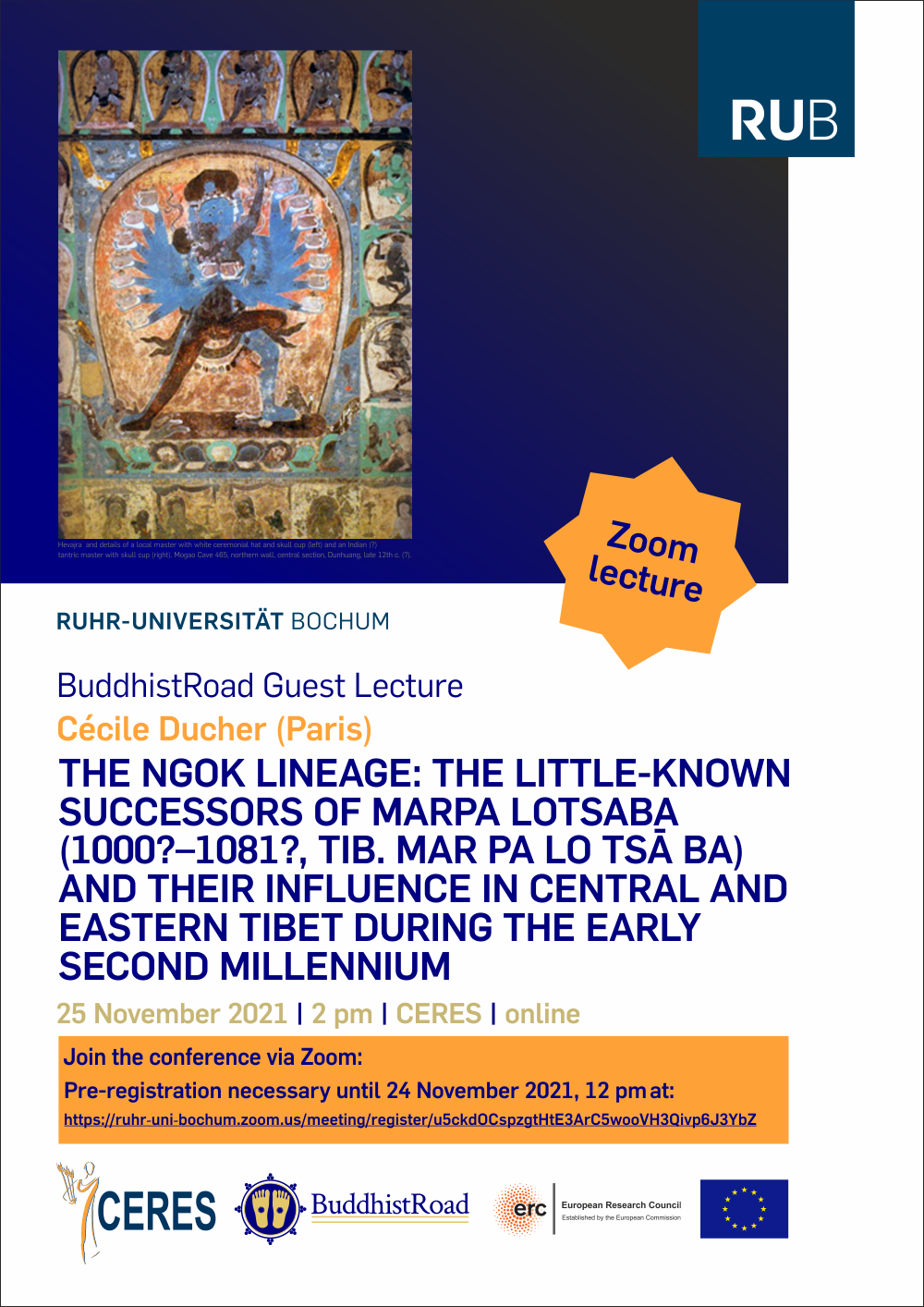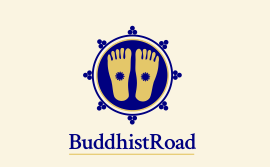The Ngok Lineage

25 November 2021 - Cécile Ducher (Paris)
The Ngok Lineage: The Little-known Successors of Marpa Lotsaba (1000?–1081?, Tib. Mar pa lo tsā ba) and their Influence in Central and Eastern Tibet during the Early Second Millennium
online guest lecture at the BuddhistRoad project, CERES, Ruhr-Universität Bochum
The spread of Buddhism to Central Asia in the early second Millennium, and particularly the introduction of Tibetan tantric traditions from the Later Spread (Tib. phyi dar) within the Tangut State is one of the fields studied at the CERES. This presentation aims to give insights into one of these traditions, the Ngokpa Kagyü (Tib. rNgog pa bKa’ brgyud), that played an important role in Central Tibet in the 12th and 13th centuries, and is now shown to have had some influence on the Tangut Buddhist culture. Ngok Chödor (1023–1090, Tib. rNgog Chos rdor) was one of Marpa Lotsaba’s (1000?–1081?, Tib. Mar pa lo tsā ba) four main disciples, along with Milarépa (1040–1136, Tib. Mi la ras pa), whose disciple Gampopa (1079–1153, Tib. sGam po pa) had many disciples who gave rise to the various Kagyü (Tib. bKa’ brgyud) sub-schools (one of them, the Barom Kagyü (Tib. ’Ba’ rom bka’ bgryud) and its representative, Tishri Répa (1164/65–1236, Tib. Ti shri Ras pa), was especially active among the Tanguts). Chödor had a son, Ngok Dodé (1078–1154, Tib. rNgog mDo sde), who became Marpa’s main successor and established the Ngok tradition as the legitimate holder of Marpa’s teaching, in the form of a family lineage based in Central Tibet. Several of his successors travelled to Eastern Tibet and may have at that time encountered Tangut disciples who later spread the Ngok approach in their country.
The presentation will be divided into two main parts. First, some elements of the history of the Ngok lineage will be shared with the hope to shed some light on how the Ngok tradition may have entered the Tangut State and how influent it was at that time in Tibet in general. Then, the main transmissions taught and practiced in the Ngok lineage, the so-called ‘seven maṇḍalas of the Ngok,’ will be presented, with a particular emphasis on what characterizes each of these tantric teachings and the main features of its iconography.


